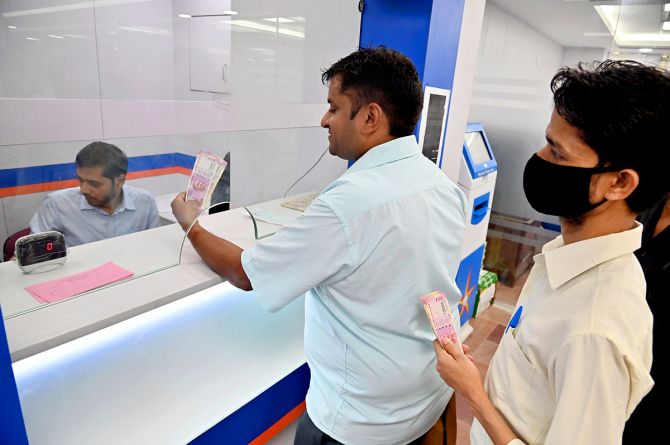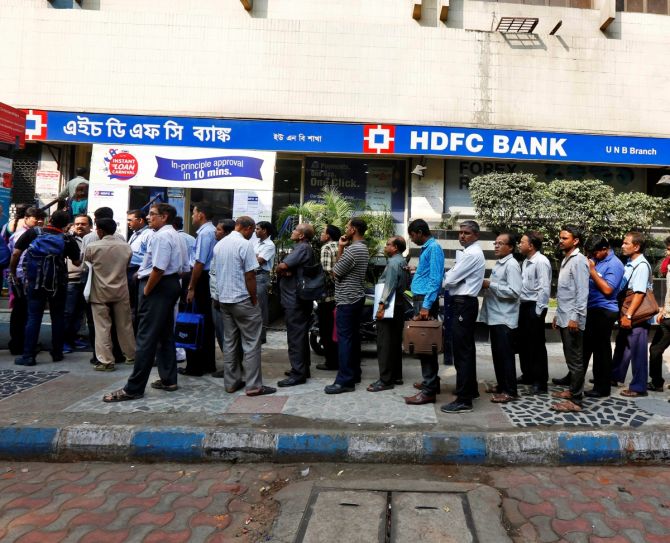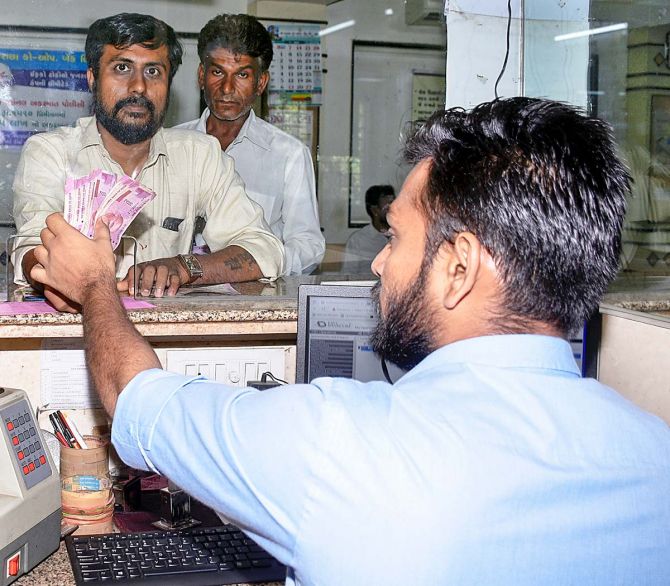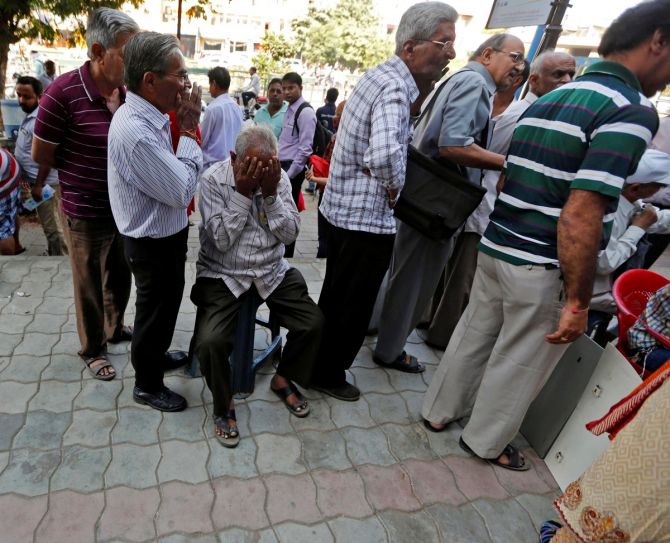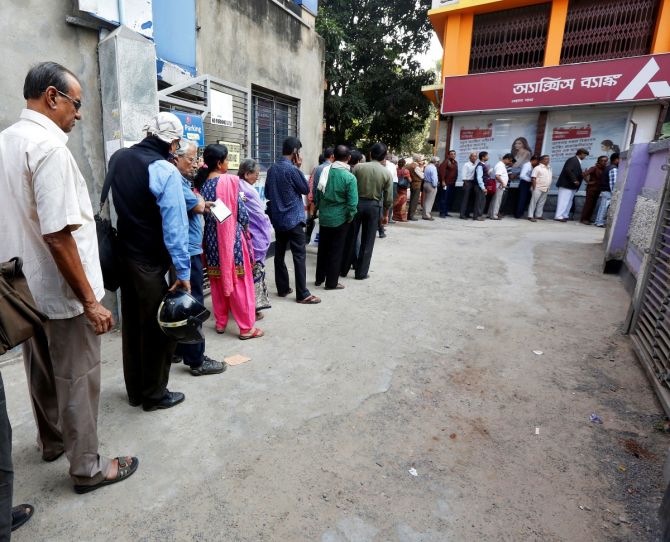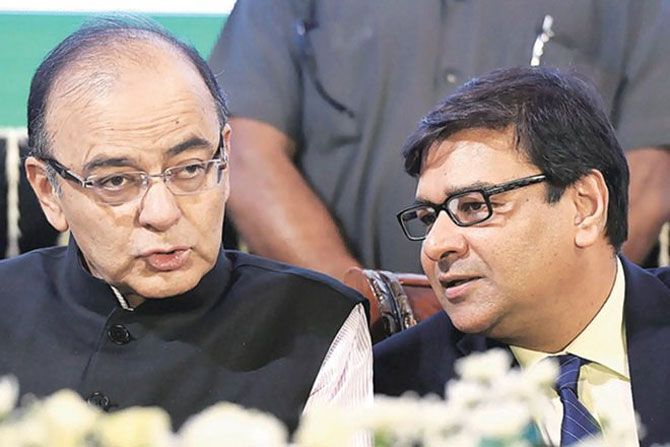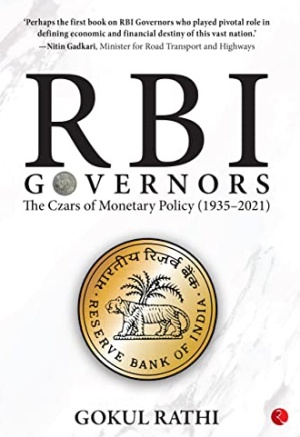The RBI was not party to the decision to demonetize 500 and 1,000-rupee notes, which was taken at the highest level of India’s political leadership.
A fascinating excerpt from Gokul Rathi’s fascinating new book, RBI Governors: The Czars Of Monetary Policy (1935-2021).
Urjit Patel’s biggest challenge was demonetization.
On 8 November 2016, Prime Minister Modi suddenly announced the demonetization of 500 and 1,000-rupee notes with immediate effect, asking citizens to deposit these notes in their possession on or before 30 December 2016.
In one fell swoop, it demonetized almost 86 per cent of the currency in circulation.
The RBI was not party to the decision to demonetize these notes, which was taken at the highest level of India’s political leadership.
Raghuram Rajan has mentioned in an interview that there had been some informal discussion on demonetization a few months before the actual announcement was made.
He also mentioned that he had advised against it because he felt that the disadvantages of demonetization in the short term far outweighed the advantages in the long run.
It is unclear whether the RBI knew before the decision of demonetization was actually taken.
What is clear is that a meeting of the RBI’s Central Board of Directors was hurriedly called just five hours before the Prime Minister’s announcement on 8 November 2016.
In the meeting, chaired by Patel, the board endorsed the proposal to withdraw the legal tender status of the 500- and 1,000-rupee notes in circulation.
An RTI query revealed that this resolution was actually signed by the governor on 15 December 2016, despite appearing to be passed on five weeks prior.
Replying to a query in the Rajya Sabha on 6 February 2017, then-finance minister Arun Jaitley asserted that the RBI board met and recommended of its own volition that the notes be demonetized.
Previous exercises in demonetization by the British government in 1946 and the Morarji Desai government in 1978 found that almost 95 per cent of the demonetized currency in circulation was deposited in banks, defeating the purpose of demonetization.
2016 was no different. As much as 99 per cent of the demonetized currency was deposited in banks.
The minutes of the meeting in November showed that the finance ministry had drawn up the proposed demonetization scheme, contending that there was a substantial growth of 500- and 1,000-rupee notes in circulation that was disproportionate to the growth of the economy.
The Central Board of the RBI, it is revealed, had disputed the finance ministry’s contentions. Most black money is held not in cash but in assets like real estate and gold.
Demonetization would likely fail and its impact on India’s GDP could be as high as 2 per cent.
The RBI is the sole note-issuing authority and currency manager of the country.
It was taking flak for an operation for which it was entirely unprepared, as it was managed by the finance ministry. There were long queues at bank branches.
The government had announced that new notes of Rs 500, Rs 1,000 and Rs 2,000 would be issued but done nothing to ensure their availability.
ATMs were not equipped to dispense the new notes, which were smaller in size.
The RBI staff was restless and uncomfortable with the people deputed from the finance ministry to handle the situation.
The RBI faced stinging criticism in the media, where it was alleged that the RBI leadership had surrendered before the government and compromised its own autonomy.
Called before the parliamentary Standing Committee on Finance in 2018, Patel stressed that the RBI’s autonomy was key to its functioning.
It was essential to maintain the important objective of depositors’ interests.
An autonomous RBI should also have exclusive control over the country’s monetary policy, with only experts and technocrats having a say.
Finally, Patel asserted that a high level of central bank reserves is essential to maintain the country’s AAA rating.
Dr Manmohan Singh, himself once the governor of the RBI and later finance minister, remarked that the relationship between the RBI and the government was like that of husband and wife, and the differences must be resolved ‘in a manner that the two institutions work in harmony’.
However, reportedly, the gap between the government and the RBI grew wider.
There were disputes on the quantum of profit to be transferred by the RBI to the government.
The government also wanted to transfer some of the RBI’s reserves.
Therefore, Patel appointed the Expert Committee on Economic Capital Framework in November 2018 under the chairmanship of Bimal Jalan, a former governor of the RBI.
There was friction regarding the PCA framework that the RBI had imposed on 11 public-sector banks; the government was uncomfortable and wanted it lifted while the RBI refused to toe the government line.
There were disputes over the government’s suggestion to set up a payments regulator outside the purview of the RBI, to which the RBI publicly objected.
There were other confrontations: In light of the Nirav Modi scam detected in the PNB, the government had been critical of the RBI for its laxity in regulation.
The government disagreed with Patel’s stance on adopting accounting standards based on the International Financial Reporting Standards and stiff Basel-III norms.
The government did not want to push for these as these provisions would require banks to maintain more capital. Tensions were soaring.
Finally, on 10 October 2018, the government invoked a hitherto unused Section 7 of the RBI Act to enforce the decisions it wanted the RBI to take, and Patel announced his resignation the same day.
Although he claimed to be resigning on personal grounds ahead of the end of his term in September 2019, it is likely he wanted to leave with no loss of dignity to either himself or the institution he led.
Patel’s resignation came days before the RBI’s Central Board met on 14 December.
Patel maintained that personal reasons were behind his exit, but many at the RBI believed that his confrontation with the government and its nominees had reached the point of no return.
In his book Overdraft: Saving the Indian Saver, Patel strongly criticized the UPA government for the enormous crisis of NPAs in public-sector banks, stating that the UPA failed to create risk controls or ensure adequate management.
He noted this as a perennial shortcoming on account of bureaucratic inertia and political meddling.
He also questioned the RBI’s failure in identifying bad loans before 2014, arguing that the RBI should have put in place stringent checks like stress tests and sensitivity analyses.
This edited excerpt from RBI Governors: The Czars Of Monetary Policy (1935-2021) by Gokul Rathi has been used with the kind permission of the publishers, Rupa Publications India.
Feature Presentation: Rajesh Alva/Rediff.com
Source: Read Full Article


